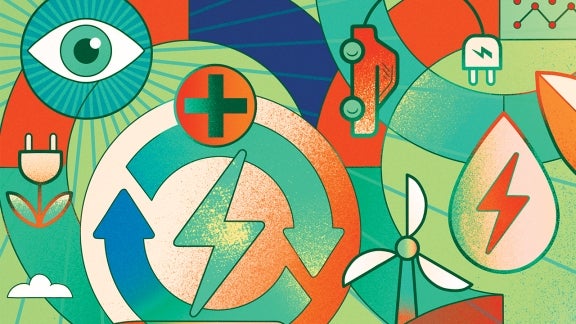
Alumni Profile

“I don’t believe AI will ever replace physicians, but that physicians who use AI tools will replace those who don’t.”
Charley Taylor ’87, ’91G, ’92G, Ph.D. Stanford, is co-founder and chief technology officer of HeartFlow.
Today’s non-invasive diagnostic tests provide little explanation of chest pain, leading many patients to undergo unnecessary invasive testing. In fact, more than half of patients who undergo these invasive tests have no significant blockage. Using data from a standard CT scan, the non-invasive HeartFlow Analysis creates a personalized 3D model of the coronary arteries and simulates the impact that blockages have on blood flow. HeartFlow utilizes deep learning AI algorithms and highly trained analysts to build 3D models of the blood vessels that feed the heart.
What led you to start HeartFlow?
In late 1993, while I was a Ph.D. student in engineering at Stanford, I went to a talk led by the university’s new chief of vascular surgery, Dr. Christopher Zarins (HeartFlow’s co-founder). As I heard him speak about blood flow and cardiovascular health, I realized that computer modeling techniques I had been studying for the last several years, starting from my senior year at Rensselaer, could be used to quantify blood flow in patients’ arteries. I completed my doctoral research with Chris and Tom Hughes, Ph.D., a professor of mechanical engineering at Stanford and a leading expert in computational fluid dynamics, on the topic of computer modeling of blood flow in arteries, and did the first simulation of blood flow in arteries from medical imaging data. In 1997, I became a professor at Stanford and continued developing computer simulation technology for another 10 years before Chris and I founded HeartFlow.
Please explain the technology behind HeartFlow Analysis and how it is used in health care.
HeartFlow Analysis is a new approach to non-invasive testing for coronary artery disease (CAD), the most common form of heart disease. The challenge with CAD is that it can be difficult to diagnose, because its symptoms can range from feelings of indigestion to breathlessness — or worse, sometimes patients don’t show symptoms at all. On top of this, while other non-invasive tests are available, they are not effective in helping physicians diagnose CAD and often result in additional tests, such as an invasive cardiac angiogram. Now, more than 55% of patients sent for an invasive procedure are found not to have significant heart disease, making the invasive procedure unnecessary in hindsight.
The HeartFlow Analysis aids physicians in identifying the right treatment pathway for each patient — whether it’s through minimally invasive procedures like stenting, or alternative ways of managing their disease like medication. By using AI and certified human analysts, HeartFlow produces a digital 3D model of a patient’s arteries and solves the equations of blood flow using supercomputing techniques. The end result is an easy to interpret, color-coded model that physicians can interact with to determine if the patient has any blockages in the arteries.
How does HeartFlow leverage data science and machine learning?
HeartFlow utilizes a SaaS model in which computed tomography (CT) images of a patient’s heart are securely sent from a hospital through the cloud to HeartFlow. Next, we use deep learning to analyze the CT images and build a personalized, digital model of that patient’s coronary arteries. Our team of highly trained analysts then inspects this model, making any needed edits. The completed HeartFlow Analysis is a color-coded, digital 3D model of the coronary arteries that a physician can use to determine the best treatment path for the patient. What makes deep learning so powerful is the fact that as the algorithms are trained on more data, the performance of the product improves.
Can using HeartFlow Analysis prevent unnecessary procedures?
Yes. By providing information on both anatomy and function, the HeartFlow Analysis provides physicians with actionable information that enables them to provide the best treatment recommendation for their patients. Research from the ADVANCE Registry looked at more than 5,000 patients across Europe, Japan, and North America. Using the HeartFlow Analysis allowed doctors to change their recommended treatment plan in two-thirds of patients.
What are the biggest challenges facing health care today?
I think the biggest challenge is improving health-care provider awareness and overcoming the health-care industry’s capacity to adopt digital technology from a budget, bandwidth, and expertise perspective. The HeartFlow Analysis has been shown to reduce the number of unnecessary tests and procedures as well as reduce the overall cost of care by more than $4,000 per patient after one year. This could save billions of dollars per year to health-care systems globally.















